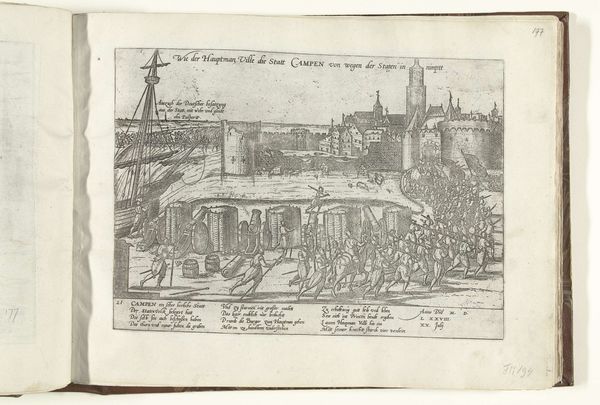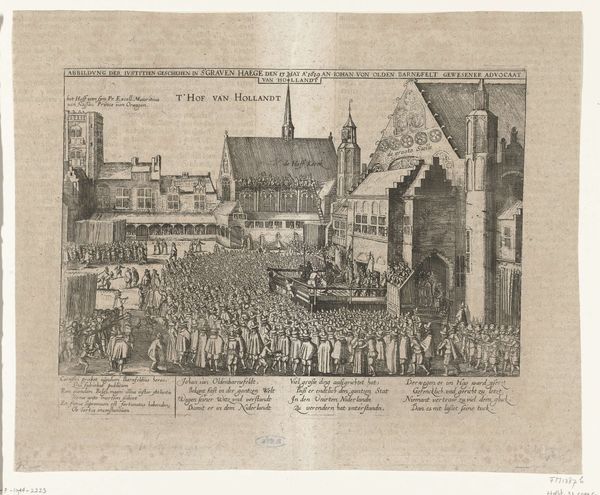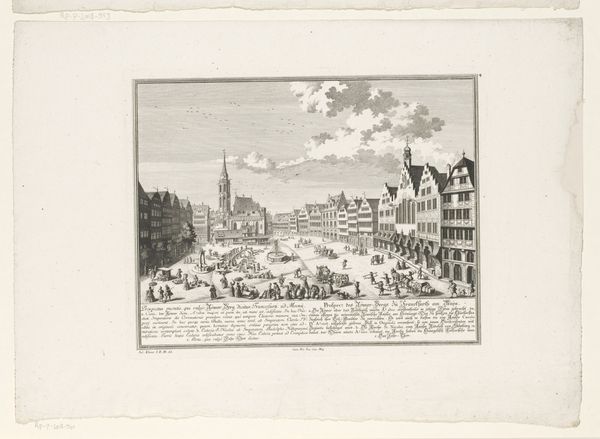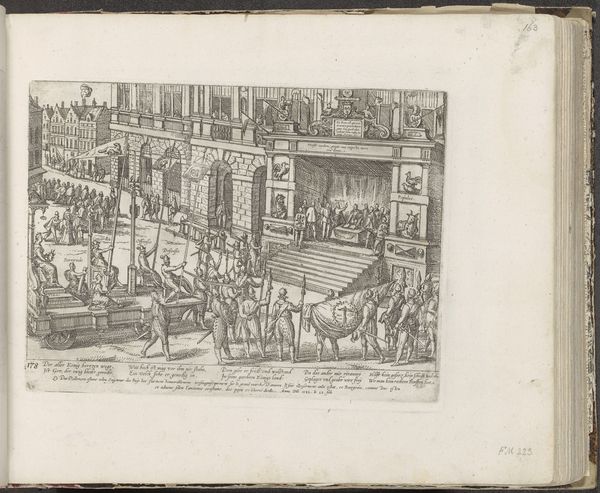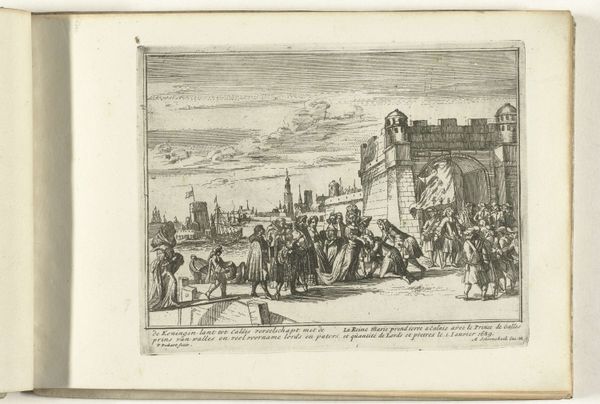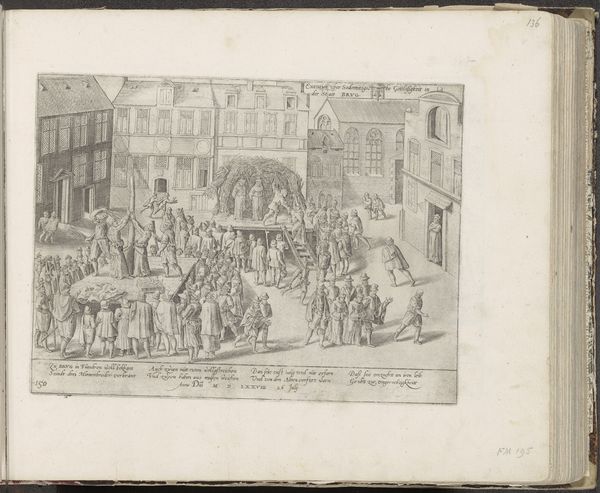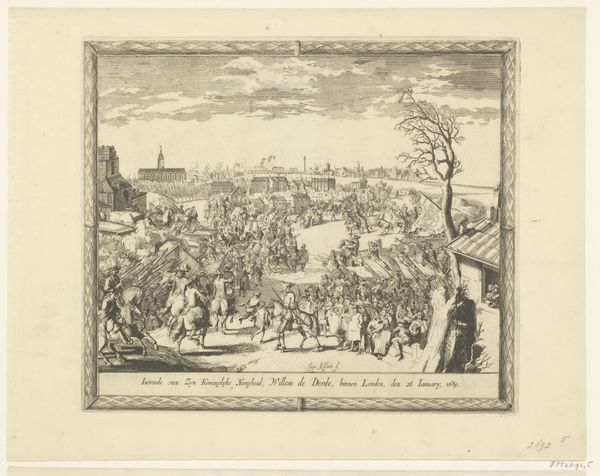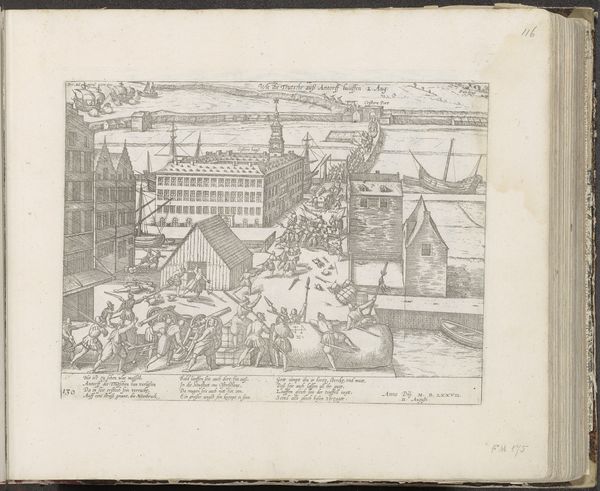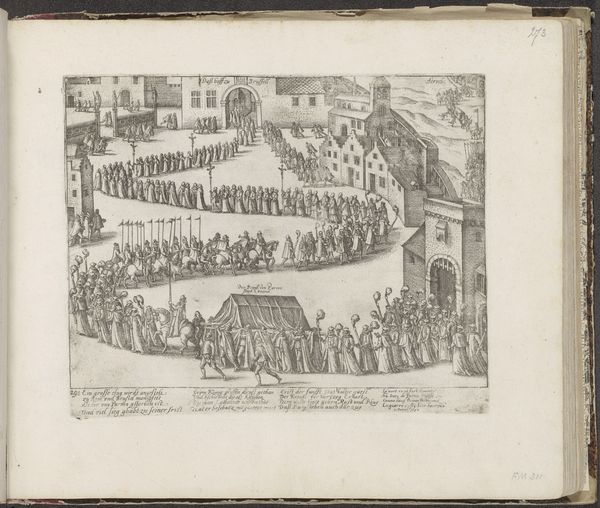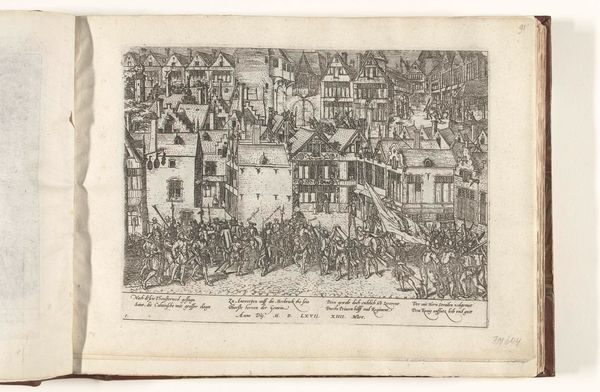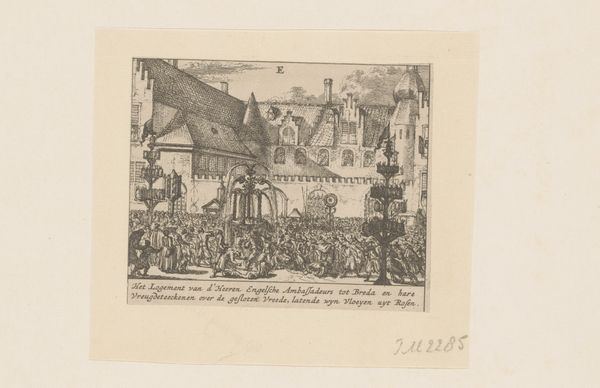
print, engraving
#
narrative-art
#
baroque
# print
#
figuration
#
line
#
cityscape
#
history-painting
#
engraving
#
realism
Dimensions: height 198 mm, width 260 mm
Copyright: Rijks Museum: Open Domain
Curator: Look closely at this print. It depicts "The Execution of Johan van Oldenbarnevelt," created between 1619 and 1621. The artist, Frans Hogenberg, captured a pivotal moment in Dutch history using engraving techniques. Editor: It’s stark, isn't it? Bleak even. All these tightly packed figures rendered in such precise lines; the density gives me a feeling of suffocating inevitability. It speaks volumes about collective actions and public display. Curator: Exactly. Oldenbarnevelt, a leading statesman, was executed for treason. Hogenberg uses the public space of The Hague as a stage. This resonates with themes of justice and the consequences of dissent against authority—common themes in the Baroque period. There's an order to the space that speaks of social structure, not simply documentary realism. Editor: I’m struck by the material conditions here. An engraving meant for wide distribution—paper and ink allowing a political message to reach many eyes. Was Hogenberg commissioned, do we know, and what implications did the medium have on his scope for creativity? Was it subversive or propagandistic at the time? Curator: Art historians suspect the print was distributed to endorse the Prince of Orange’s regime after he took power following the trial. Oldenbarnevelt’s execution created a deep division in the Netherlands; its effect has permeated artistic output. Consider the cityscape backdrop as almost another character in the play. What significance could be assigned to architecture present, the buildings as stand-ins? Editor: Buildings, like the print itself, are products. The physical materials, their cost, who paid for their construction—all reflecting economic and social realities, and class conflict too, I imagine. Curator: Indeed. This piece gives us more than one reading. There is so much more implied than declared on the page itself. It shows how historical events can ripple through culture, shifting paradigms, shifting symbol systems. Editor: I agree, the focus here goes beyond recording. It makes you realize that everything we consider ‘art’ stems from something physical—extraction, production, and the labor used to create. Very powerful when rendered so plainly like this.
Comments
No comments
Be the first to comment and join the conversation on the ultimate creative platform.
